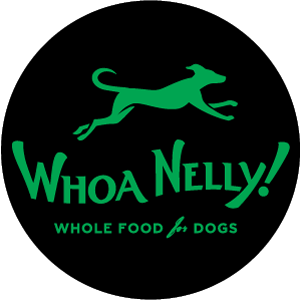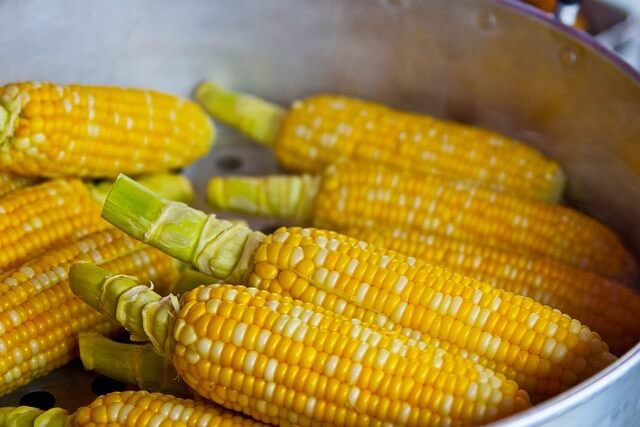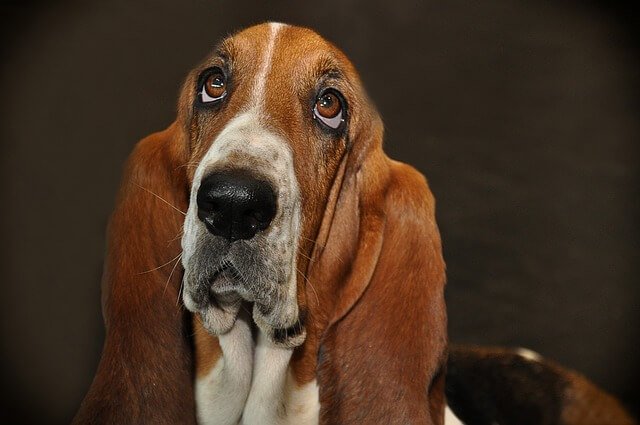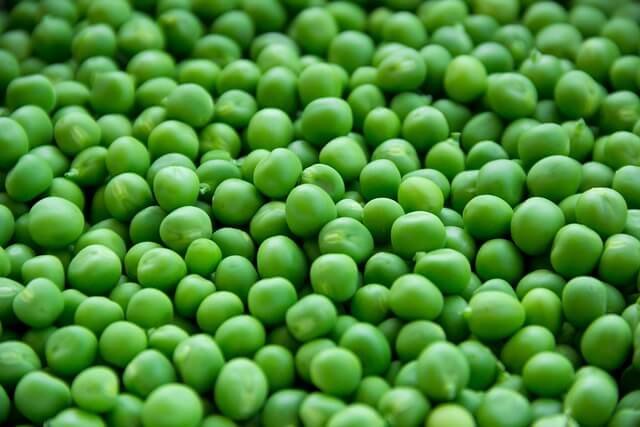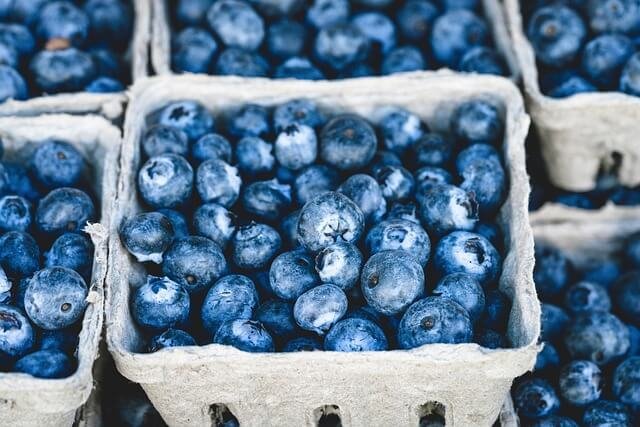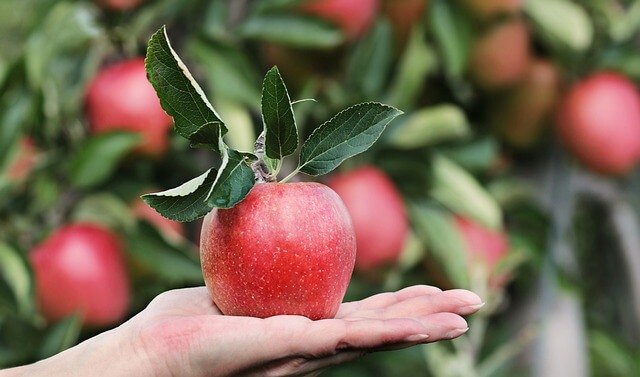Do Dogs Need To Eat Carbohydrates?
When you think about the best foods for dogs to eat, what is at the top of your list?
It’s probably not sugar.
But that’s what most dogs eat. Because most dogs eat kibble, and all kibble contains carbohydrates. The actual amount might surprise you though because it’s not listed on the pack. It is usually around 50-60%. That means most dogs eat a diet that is over half carbs.
The $3.5 billion dollar question is: should dogs be eating carbohydrates?
Table of Contents
Do dogs require carbs?
Carbs are a macronutrient that is broken down into simple sugars in the body. They include sugar, starch, and cellulose. Common sources are grain, corn, legumes and root vegetables. They are needed to bind dry dog food pellets together, and used as the primary source of calories in kibble.
Dogs do not require any carbohydrates in their diet. Zero.
But this doesn’t mean that you shouldn’t feed any. Most dogs tolerate carbohydrate, and there is generally no issue with a small amount in the diet.
But! There is a big difference with a small amount of carbs from fruits and veg (less than 5% in quality raw food) and the majority of calories coming from carbs (50-60% in kibble).
The Pet Food Industry argument is that while carbohydrates are not essential, they provide an excellent (ie. cheap) source of energy for dogs. The industry likes to extrapolate studies, saying that because dogs can tolerate some carbohydrate that means the majority of the diet should be carbohydrate. Which is crazy. But it does make a lot of money.
When given the choice, what do dogs eat?
In a 2013 study, dogs were freely offered diets of varying composition. The study found that when given the choice, dogs chose a diet that was 30% protein, 63% fat and 7% carbohydrates by energy.
If carbs are an excellent source of energy you would think that dogs would prefer them to protein or fat. But they don’t. They choose animal fat and protein for the majority (93%) of their calories.
It’s worth repeating that carbohydrates are not bad for dogs! The issue is that too much is unhealthy. Feeding a high carbohydrate diet to an animal that has evolved to eat mostly meat is very likely to cause health issues. Like obesity and cancer. Sound familiar?
What is the issue with carb in the diet?
The problem is that dogs don’t produce the enzyme α-amylase in their saliva, which helps to break down starch. While some is produced by their pancreas, overall their digestive system is not designed to digest large volumes. It puts stress on the body, causing inflammation. And chronic inflammation is the number one cause of disease.
The reality is that dogs as a group are not doing well.
Did you know that dogs are more likely to die of cancer than any other animal on the planet? There are studies that show reducing carbohydrates in dogs with cancer reduces tumour growth. Carbs are clearly playing a role here.
The source of carb used in the food matters - a lot. This is because cheap ingredients like soy beans, chick peas and legumes contain something called phytoestrogens. These ingredients can disrupt endocrine function. They should be consumed in moderation because large amounts can be harmful.
Conversely, phytonutrients help with enzyme production and are a good source of fibre. A good example is carotenoids, which is found in fresh produce like carrots, apples and cauliflower. These ingredients have beneficial properties, and can be enjoyed in higher amounts (but still not too much!)
Another big issue is residual pesticides. Large amounts of gylphosate (Roundup) are used in the production of cheap carbs like grain, which then find their way into your dogs body. Dogs have glyphosate levels thirty-two times the average human.
No wonder so many dogs are sick.
Dogs eating dry food or kibble have higher rates of inflammation and obesity. Whereas raw fed dogs have less inflammatory markers like homocysteine levels. One big different between these two diets is the carbohydrate level. Raw fed dogs are typically fed less than 5% carbs as the total diet.
Why does dog food contain so much sugar?
There are two reasons that dry dog food contains so much carbohydrate. Kibble needs the starch to bind the pellet together. You can’t make kibble without at least 30% carbohydrate.
The other reason is that carbs are a cheap source of calories. Putting lots of carbs into the diet keeps the cost of producing the food down. And because dogs “tolerate” carbs, why worry?
Because everything in nutrition is a balance or trade off. Higher levels of carbs means there is less room for healthy fats and protein. The best food can’t contain lots of carbs, because dogs literally don’t need to eat carbs. The best dog food is made from quality animal protein and fats, with a small amount of carefully selected plant matter.
What about premium or “expensive” kibble?
Same problem unfortunately. Kibble needs carbs to bind the pellets, and in most cases it’s really just an exercise in marketing. In my opinion there’s no such thing as healthy kibble - but there are certainly lots of expensive ones!
Keep in mind that sources of carb like grains or soy are much, much cheaper than lean meats. If your dry dog food is expensive and half carbohydrate, it’s a cheap imitation of a quality diet. It doesn’t what the ingredient list says.
What about grain free kibble?
In 2018 there was a panic about a potential link between diets containing grain and a heart condition known as canine dilated cardiomyopathy (DCM). This lead to the creation of the new “grain free” diet which has become very popular.
In these diets, instead of grains there are high amounts of other sources of carbs like peas, lentils, legumes and potatoes. No grain, see?! But they are still often very high in carbohydrates, and likely contains lots of damaging phytoestrogens.
The other issue with high levels of legumes in the diet is that it is thought they may block the absorption of the amino acid taurine, and can trigger leaky gut. This can affect digestion and immunity.
Should there be zero carbs in my dogs diet?
No! Some types of carb contain important functional nutrients, and it’s a good thing to have them in your dogs diet. They key is to make sure that they are the right sort of carb, in a moderate amount, and the food is made with minimal processing.
For example, fresh fruits and veggies contain phytonutrients and are rich in antioxidants. These have a positive impact on your dogs diet - but it’s important to not have too much. The diet should be at least 70% high quality animal protein for optimal function.
Here are some high quality carbs to include in your dogs diet:
Apples, carrots, bananas
Cruciferous veggies
Leafy green veggies
Berries
Oats
Check the nutrition panel of your dogs food for the carbohydrate level. You want to feed food that has less than 5% carb. Less is better - we aim for 2-3% carbohydrate in our food. This is from small amounts of high quality ingredients like apples, berries, and cruciferous veggies. These ingredients provide beneficial phytonutrients and antioxidants, while keeping the total carbs to a healthy level.
